I've been studying the other networkx plotting posts, but I've been having a hard time adapting them to my problem.
1) How do I create subplots with network graphs, without a PREDEFINED number of objects to plot? The function grabs this dynamically.
2) Is there an easy way to filter the network graph by limiting only those edges with over a weight of 2, for instance? or do I have to edit the network object itself to do so?
UPDATE #2: I figured out a way to filter by degree (see below). I'm wondering more generally if there are better ways to make my network data more understandable?
nol comes in the format [ [Year, networkobject], [Year, networkobject]]
def standardgraph_multiyear(nol, minimumdegree):
"""
Plots multiple graphs based on year
nol = takes in a LIST of [year, network object]
minimum = takes in a digit to filter nodes by degree
"""
#Each iteration prints a new subplot
numrows = len(nol)
fig = plt.figure(figsize=(10,60))
for i, val in enumerate(nol):
gloc = numrows,1,i+1
plt.subplot(numrows, 1, i+1)
if minimumdegree > 0:
outdeg = val[1].degree()
to_keep = [n for n in outdeg if outdeg[n] > minimumdegree]
mingraph = val[1].subgraph(to_keep)
pos = nx.spring_layout(mingraph, iterations=200)
nx.draw(mingraph, pos, font_size=8, with_labels=True)
nx.draw_networkx_edges(mingraph, pos, alpha=.2)
nx.draw_networkx_nodes(mingraph, pos, node_size=60, font_size =8, labels=True)
nx.draw_networkx_labels(mingraph, pos, font_color='k', font_size=8)
plt.title("Year {0}".format(val[0]), loc = 'center', fontsize=20)
if minimumdegree == 0:
outdeg = val[1].degree()
to_keep = [n for n in outdeg if outdeg[n] > minimumdegree]
mingraph = val[1].subgraph(to_keep)
pos = nx.spring_layout(mingraph, iterations=200)
nx.draw(mingraph, pos, font_size=8, with_labels=True)
nx.draw_networkx_edges(mingraph, pos, alpha=.2)
nx.draw_networkx_nodes(mingraph, pos, node_size=60, font_size =8, labels=True)
nx.draw_networkx_labels(mingraph, pos, font_color='k', font_size=8)
plt.title("Year {0}".format(val[0]), loc = 'center', fontsize=20)
return

